3 Best Tools to Translate Old English in Modern Language
Old English, the language of the Anglo-Saxons, holds a treasure trove of history and literature. However, its unfamiliar structure and vocabulary can make it daunting for modern readers. Whether you're exploring ancient texts, genealogical records, or literature, it is important to learn how to translate old English.
This guide will help you understand the manual technique first and then share the best tools to use. By reading this guide, you can be proficient in translating old English without facing complications or getting errors.
- Part 1. Key Characteristics of Old English
- Part 2. Why is It Hard to Translate Old English?
- Part 3. Basic Steps to Translate Old English
- Part 4. 3 Best Old English Translators
- Part 5. How to Use PDNob Image Translator to Translate Old English to Modern English?
- Part 6. Summary
Part 1. Key Characteristics of Old English
When you are learning the technique to translate old English, it doesn’t mean to focus on methods only. You must be familiar with the language properly because you can’t get the expected results without being good at this language.
Alphabet and Pronunciation
Old English uses a mix of Latin letters and unique characters like æ (ash), þ (thorn), and ð (eth). The pronunciation of vowels and consonants differs significantly from modern English which adds to its complexity.
It is right to say that pronunciation is the main factor that makes the overall learning and understanding of this language complex.
Grammar and Syntax
Old English is highly inflected which means word endings change based on case, gender, and number. Unlike modern English, word order is less fixed and relies heavily on inflections to convey meaning. This complexity makes it hard for a modern English learner to understand and translate old English with accuracy.
Vocabulary
Many Old English words are unfamiliar as a significant portion has either evolved or fallen out of use. For instance, "cwēn" means "queen," and "hlāf" translates to "loaf" or "bread”. But most of us haven’t even heard or seen these specific words of old English even in the literature or old books.
Influence of Other Languages
Old English was shaped by Latin, Old Norse, and Celtic languages, leading to a rich but challenging vocabulary. Because of the impact of the Latin language on this particular language, it challenges its readers to read and understand it.
Absence of Standardized Spelling
Spelling in Old English texts varies widely, as there was no standardized orthography. This variability makes translation more complex.
Part 2. Why Is It Hard to Translate Old English?
From the above section, you must have understood the major features of old English. It might be possible that you have become known of the basic challenges that you can face while looking to translate old English into modern one.
However, for your assistance, we have discussed some reasons that will help you understand why it is hard to go ahead with this process or learn old English.
Complex Grammar
Unlike modern English, Old English uses a system of declensions and conjugations to indicate relationships between words. Misinterpreting these grammatical markers can change the meaning of a text entirely.
Obsolete Vocabulary
Many Old English words are no longer in use or have undergone significant semantic shifts. For instance, "dēor" meant "animal" but evolved to mean "deer" in modern English.
Unfamiliar Script
The use of characters like þ and ð, along with different punctuation, can confuse readers unfamiliar with the script.
Regional Variations
Dialects varied across different Anglo-Saxon regions, resulting in inconsistencies in vocabulary and grammar. Translating texts from different regions requires additional knowledge of these dialectal differences.
Lack of Context
Without historical or cultural context, some words and phrases are difficult to interpret, especially idiomatic expressions unique to the time. You won’t be able to understand the context of the words unless you have a deep understanding of the topic or language.
Undoubtedly, you might be using an AI image translator but it will just translate the old English characters. You may have to put your manual efforts to understand the context.
Part 3. Basic Steps to Translate Old English
No denying that it is hard to translate the old English language into a modern language. There are some people who want to understand the steps to go ahead with this process. Here, we have discussed the basic steps that you can take for this purpose and understand the general preview of how to go ahead with this process.
Familiarize Yourself with Old English Grammar
Learn the basics of Old English grammar, including its cases (nominative, accusative, genitive, dative), verb conjugations, and noun declensions. A good grammar guide or textbook is invaluable in understanding these rules.
Build Your Vocabulary
Start with commonly used Old English words and phrases. Use flashcards, vocabulary lists, or language apps to reinforce your learning. Recognizing keywords like "hūs" (house) or "hlāf" (bread) can simplify translation efforts.
Understand the Historical Context
Knowing the cultural and historical background of the text provides insight into its meaning. Research the time period, societal norms, and authorial intent to make sense of obscure references.
Use Translators and Dictionaries
Leverage Old English dictionaries or digital tools designed for translation. Reliable sources like Bosworth-Toller’s Anglo-Saxon Dictionary can help decipher unfamiliar words.
Analyze Syntax and Structure
Break sentences into individual words and phrases. Identify the subject, verb, and object while paying attention to inflectional endings that reveal relationships between words.
Practice with Sample Texts
Start with simpler Old English texts before tackling complex literature. Annotated texts with translations are great resources for beginners.
Part 4. 3 Best Old English Translators
When it comes to translate old English, you may find multiple choices on the internet. But only a few of them actually work and translate this type of older language. Most of those tools will just share a random translation of your specific text or image.
That’s why it is compulsory to choose the best image translator for PC to ensure the accuracy of translation. If you haven’t found the one, we have done this for you. Here, we have listed the best 3 tools that you can choose for this specific type of translation.
PDNob AI Image Translator
It is an advanced tool designed to simplify the translation process, particularly for complex or historical texts like Old English manuscripts. This tool allows you to extract and translate text directly from scanned images or documents, saving time and effort.
Its Optical Character Recognition technology is highly accurate to ensure minimum errors during text extraction. PDNob Image Translator supports multiple languages and can seamlessly bridge the gap between Old and Modern English.
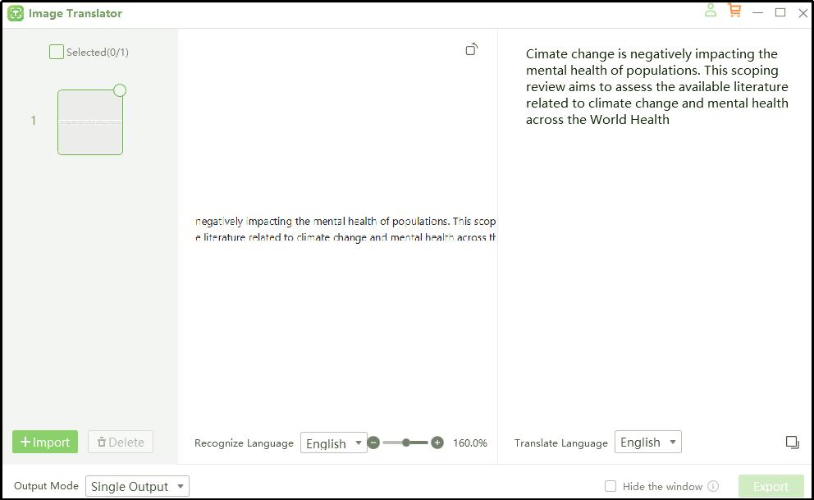
Whether you're a historian, student, or linguist, it is an invaluable resource for deciphering manuscripts with ease. That’s why it is highly recommended to download this software by clicking on the “ Free Download” button.
Bosworth-Toller Anglo-Saxon Dictionary
The Bosworth-Toller Anglo-Saxon Dictionary is a cornerstone resource for anyone delving into Old English. This exhaustive dictionary offers detailed entries with definitions, grammatical notes, and contextual examples.
Its digital version comes with search functionalities, allowing users to quickly locate words and their meanings. The dictionary also provides historical insights into word usage, which is essential for understanding the nuances of Old English.
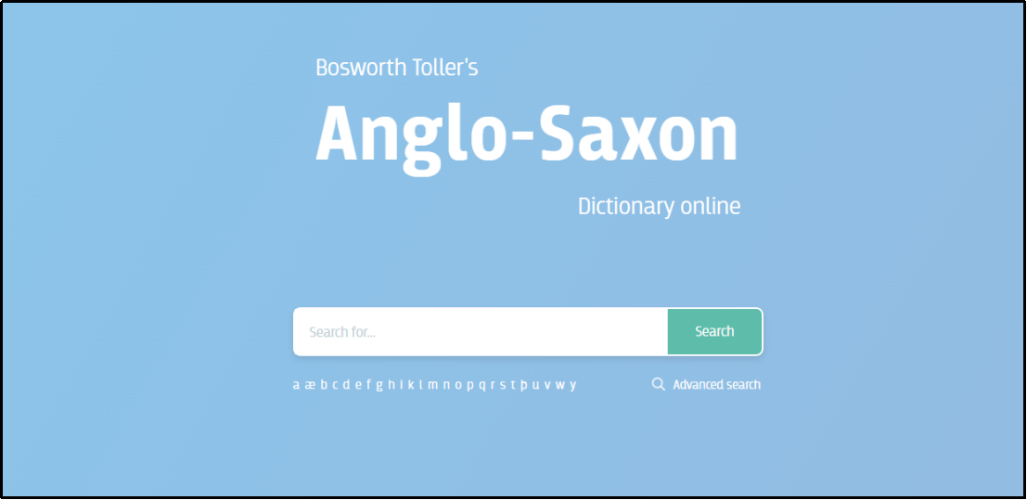
Whether you're working on literary translations, academic research, or genealogical studies, this dictionary is an indispensable tool for decoding the complexities of the Anglo-Saxon language.
Old English Translator Online
It is a user-friendly web tool tailored for quick and straightforward translations. Perfect for beginners, it allows users to input individual words or short phrases in Old English to receive modern English equivalents.
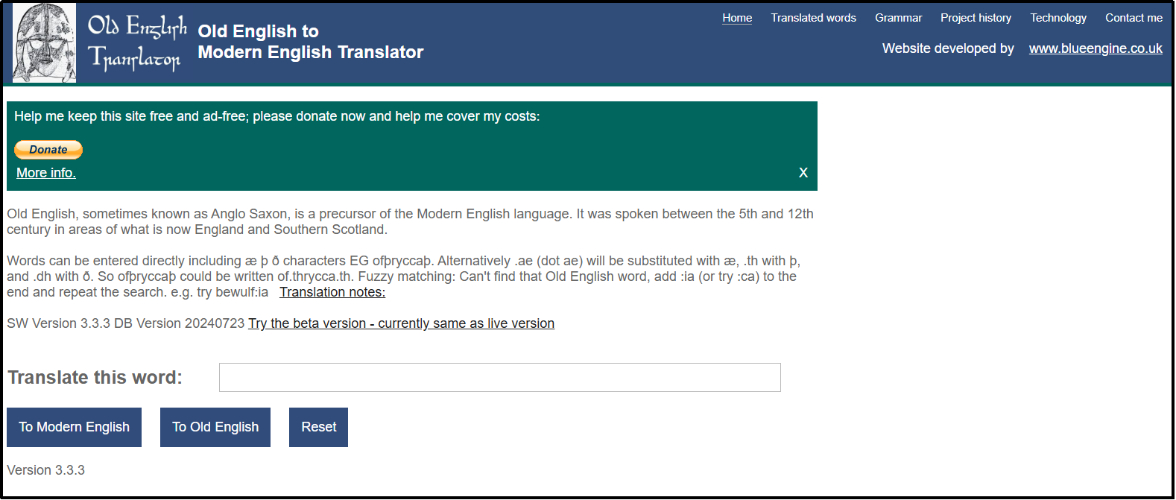
The tool is intuitive which requires no prior knowledge of Old English grammar or syntax, making it accessible to a wide audience. You can translate scanned document too by extracting the text first and then uploading it to this online tool.
While it may not be as comprehensive as advanced dictionaries or software, it provides a solid starting point for basic translations. Whether you are exploring Old English texts for the first time or need a quick reference, this online translator is a reliable option.
Part 5. How to Use PDNob Image Translator to Translate Old English to Modern English?
To help you understand the working of the best tool to translate old English, we have discussed the steps to follow here. You only have to follow these simple steps to use PDNob Free AI Image Translator for the sake of accurate translation.
- Open this software on your device and hit the “ Import” button.
- Choose images having old English text printed or written on them.
- From the second box, click on the “ Translate Language” list and choose “ English”.

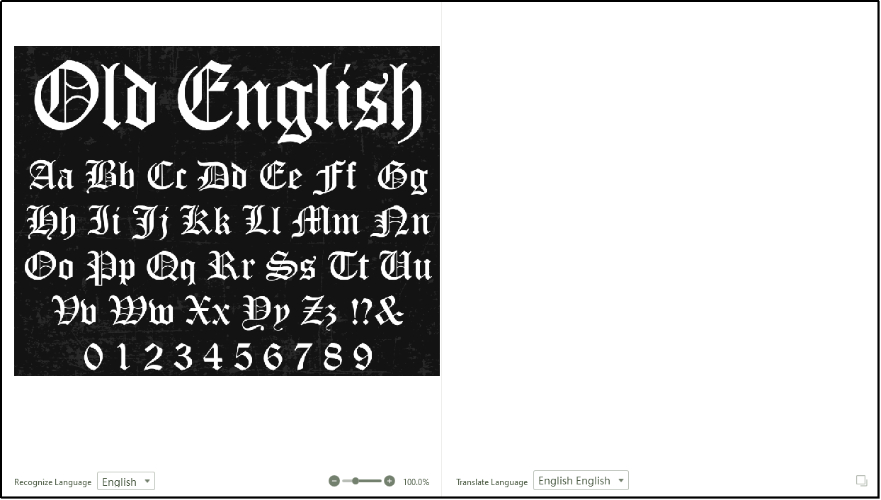
It will instantly translate the text in your selected language and present it in editable format. You can read the text, edit it, and download it by clicking on the “ Export” button.
Part 6. Summary
Undoubtedly, it is a challenging task to translate old English documents into the modern language. However, you can make it simple by using the above-mentioned tools. For quick and easy usage, we recommend you choose PDNob AI Image Translator instead of others.
The reason behind this is the accuracy and easy usage. You don’t have to put in a lot of manual effort to accomplish this task and get the desired results.
Speak Your Mind
Leave a Comment
Create your review for Tenorshare articles
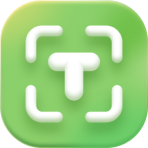 PDNob Image Translator
PDNob Image Translator
Instantly translate various types of images to text.






